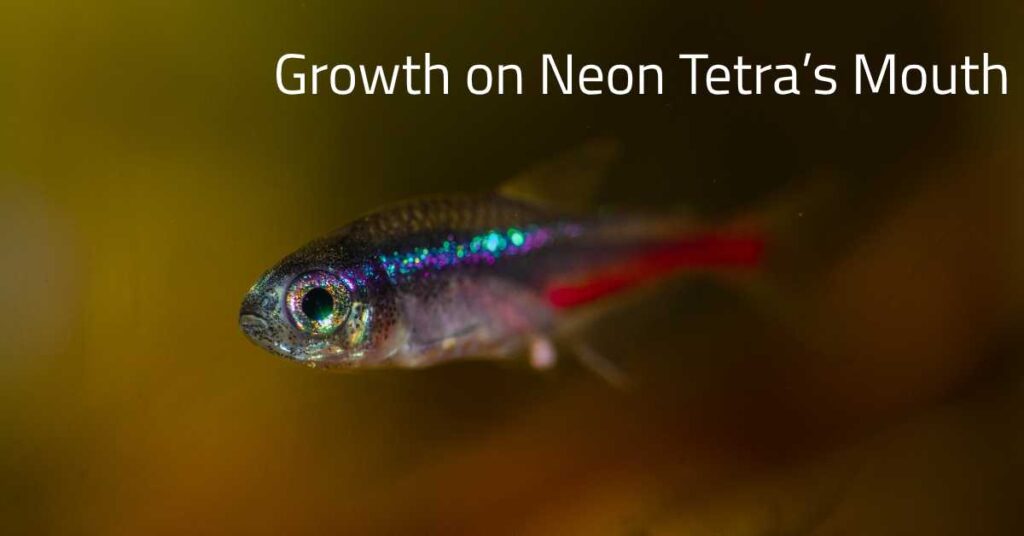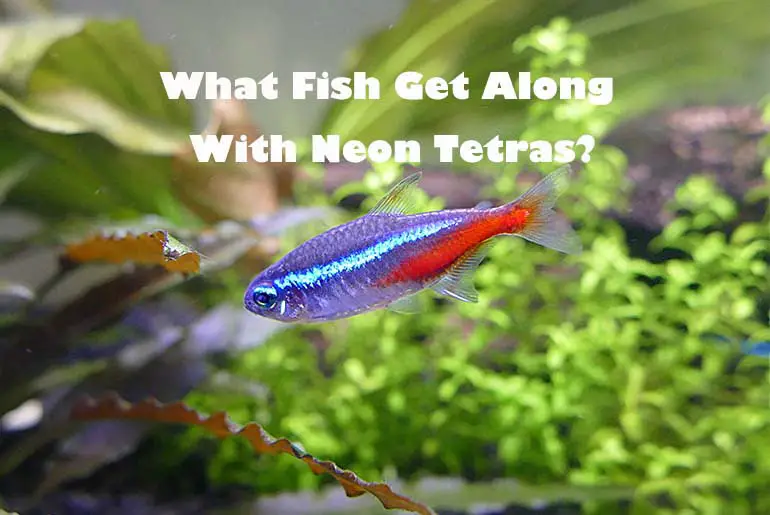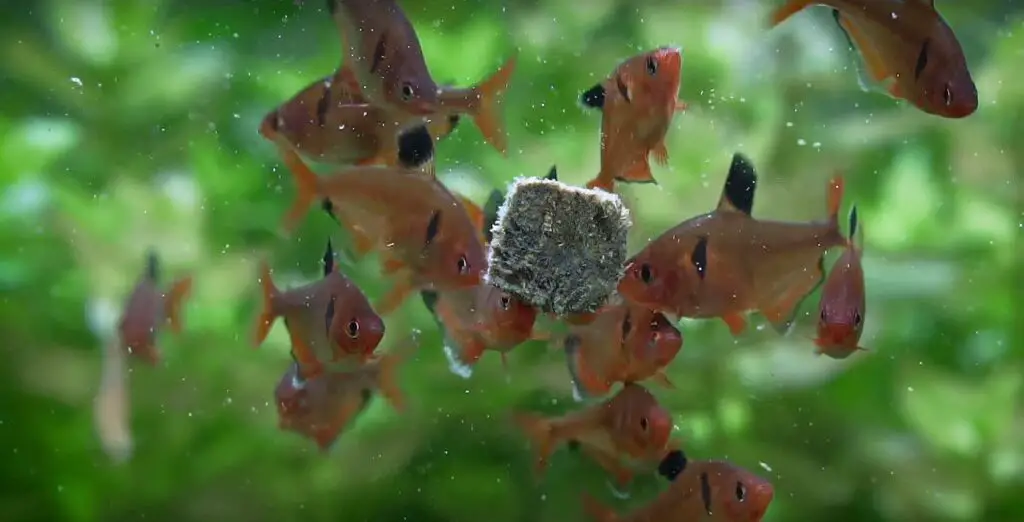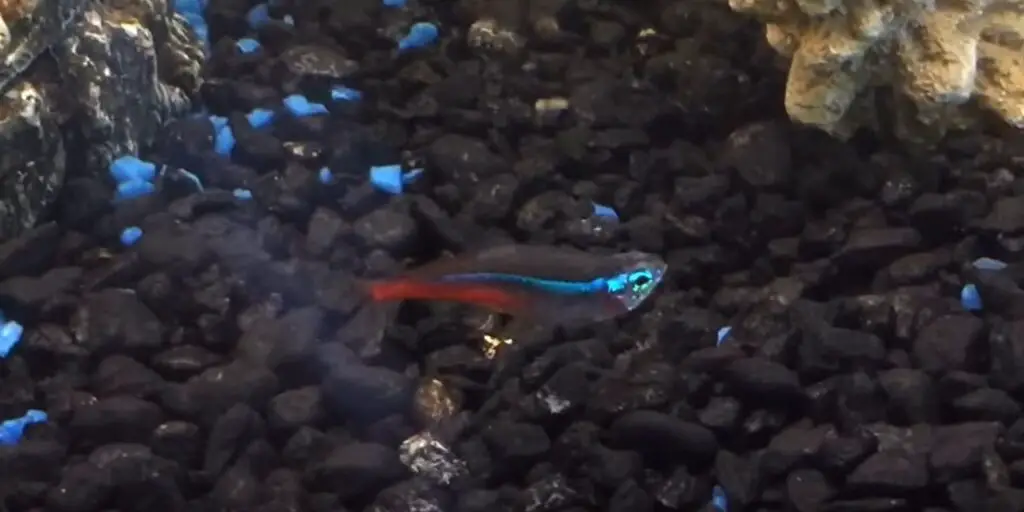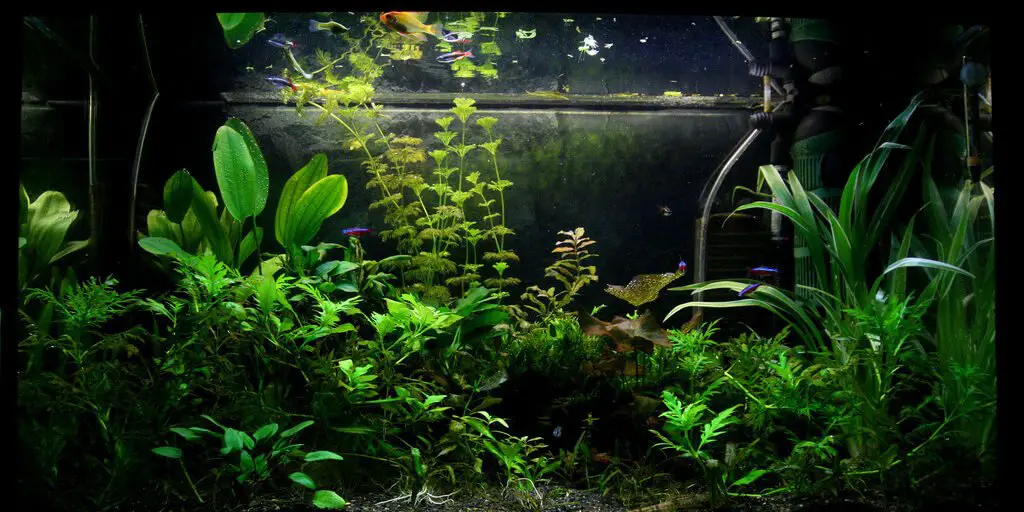Neon tetras belong to a family of Characidae. You can keep your neon tetras with at least 15 members in the same aquarium as they are non- aggressive community fish. They are so energetic and active that you will enjoy watching them all day long.
Their body has a color combination of blue and red. Along with it, they are transparent, which helps them to hide from predators. Another interesting feature of neons is if they feel unsafe, they turn off their red/blue iridescent hue. They can grow up to 2.5 inches long; however, females are slightly shorter than males. They can live up to 8 years if cared properly. Furthermore, their colors fade while they are sleeping, and while they are sick.
Scientific Classification
Kingdom: Animalia
Phylum: Chordata
Class: Actinopterygii
Order: Characiformes
Family: Characidae
Cause Of Growth On Neon Tetra’s Mouth
Have you ever seen a lump on the mouth of the neon tetra? Are you worried that your neon tetras are not eating properly? Do you notice a change in the behavior of your neon tetras? What is the reason behind these things? In this article, you will get some help if your neons are suffering from this problem.
The main causes behind the growth on the mouth of neon tetra are:
- Fungal Infection
- Neon tetra’s disease
- Tumour
Fungal Infection
Fungal infection also referred to as mouth rot disease or cotton wool disease or cottonmouth, is caused due to bacteria known as Flexibacter Columnaris, which are found in aquariums. Fish use their mouth for eating or grabbing or fighting, so there is a high chance of injury in their mouth, and the bacteria could get in through the wound, which makes it more vulnerable. Similarly, if the fins and gills of the neon tetras get any injury, then the bacteria will enter from that part as well.
Symptoms
The major symptoms of fungal infection are as follow:
- First of all, your neons will lose the color of the mouth. The blue-red color will change into a white-greyish color.
- After this, small fuzzy cotton-like growth could be seen in the mouth of neons. Furthermore, the neon tetras become less active than before.
- Neon tetras will separate themselves from others and will swim alone. This stage could become dangerous if neons do not eat. Due to the growth of the lump, they might not be able to eat at all and could die from starvation.
It is better to keep a close eye on your neons. If you notice any change in the behavior of your neons, better to observe and find the cause so that you can start the treatment as soon as possible.
Treatment
You can treat the fungal infection at the initial stage, so it is important that you notice at the initial stage. As the lump increases, it becomes difficult for the treatment.
- The first thing is to separate the neons that you think is suffering from fungal infection as it affects other fishes also if kept together.
- The next step is to start medication. You could get multiple anti-bacterial or anti-fungal medicines from the fish stores. If you explain the problem of your neons to the person s/he will provide medicine for your neons.
- According to the instructions written on the manual or given by the person, you have to use the medicines. If you do not see any progress ask the person to give another medicine or if you have made any mistakes while giving them medicines.
- Another important thing you need to do is change 30%-50% water in an aquarium. This reduces the stress of those infected neons and helps them to recover soon.
- If your medication is working, then you will notice the fuzzy cotton-like growth slowly disappearing, and your neons become active slowly. After a week of recovery, you can keep your neons back with other fish.
Neon Tetra Disease
This is another reason for the growth of mouth in neon tetras. This disease is caused by a parasite named Pleistophora hyphessobryconis that can be transferred through food or another infected fish. This parasite infects food that you put in an aquarium. It enters the body of neons after they consume the infected food or if they consume infected fish.
This parasite enters the body of neons and makes their way through the intestines to the skin. In the skin, they form a cyst, which appears in different parts of their body, including the mouth.
Symptoms
The symptoms of this disease are as follow:
- The first symptom you will notice in your neon is they will swim alone and seems quite restless. Their behavior becomes unpredictable and weird.
- The color of neons starts to fade from blue and red to pale and white bin colors, particularly in their spine region. If the disease increases, then your neons will have trouble swimming straight as well as you will see bumps and bulges in their mouth and body.
- As the lump increases, it becomes smoother and even instead of being fuzzy. This is the difference between fungal infection and neon tetra disease. Due to growth in their mouth, your neons might not be able to eat.
Treatment
- Unfortunately, the treatment of this disease is unknown. But the best way is to protect your other fish from this disease by separating your infected neons from them.
- You must feed live food by cleaning and cooking it properly to prevent them from NTD.
- If your neon tetras are struggling too much with this disease, then I would suggest you to humanely euthanize them.
Tumour
Research has found that the tumor found in mammals are also found in fishes as well. There are many types of tumors. Some of them are transmissible to other fishes. If you keep the infected neon tetras in the aquarium for a long time without any medications, then it spreads to different parts of the body.
Symptoms
- If your neon tetra is suffering from a tumor, then you will notice a pea-sized single round or oval papillary masses located on the lips.
- If the growth increases, neon tetras find difficulty in breathing and eating.
Treatment
- The diagnosis of the disease depends on the biopsy test of the neon tetras. Generally, computerized tomography and ultrasonography are used to check the tumor of neon tetras.
- Excisional biopsy is an important part of the treatment of tumors in neon tetras. In this treatment, the whole mass is removed and tested, which helps to completely remove the tumor or help to use other therapies for treatment.
- The next option is the surgery of the mouth, which can be dangerous. There is a high risk for neon tetras while doing surgery.
Read Full article on Tetra Fish Diseases and Treatments
Frequently Asked Questions (FAQ)
How long can a fish live with neon tetra disease?
Neon tetras normally can live for 10 years in wild nature and 5 years in an aquarium. You must avoid doing any drastic changes in an aquarium because it may traumatize the neon teras and may even die. Neon Tetra Disease (NTD) is an incurable disease but is preventable.
Generally, neons with NTD lives for a week or a month or even longer. This depends on how long your neons have been suffering from this disease and how fast is the parasite growing in the body of your neon tetra fish. So, you must be very careful when you buy live food for them as they are omnivorous. You should be sure that there is no dead fish or sick fish floating in an aquarium with your neons while purchasing.
Do you need to separate if your neon tetra is suffering from any disease?
Yes, it is very important to separate a Neon tetra with another fish if you notice a growth in their mouth or is suffering from any disease because it may infect other fish also. If you keep them in the same aquarium, the other fish might consume that tissue and get infected as well, or they may die in the aquarium, which you might not notice, causing other fish to get the same disease. Separating infected neon tetras may also reduce the stress and help them to recover fast.
Can other fish get neon tetra disease?
After the disease is discovered in Neon Tetra fish, the name was assigned. But you can see this disease with other fish as well, like Angelfish, Barbs, and Rasboras. If you find any fish with this disease, just separate them with other fish and start medication.
Can you use aquarium salt?
If the aquarium salt is added in an aquarium in proper proportion, neon tetras could handle it compared with other fish. The tolerance level of other fishes with aquarium salt is quite lower than neon tetras. But if you add the salt in a high amount, then it will become difficult for neon tetras as well to adopt it. Aquarium salt is mostly used for the treatment of common fish diseases like itching etc. Aquarium salt is unsuitable for tropical fish, so you should be careful while using it. Before using, read the instructions written on the packet of the aquarium salt carefully so that you could use it in proper proportion.
Is cottonmouth in neon tetra contagious?
Flexibacter Columnaris is the main cause of cottonmouth or fungal infection. This is a communicable disease because it can be transmitted to other fish. If a healthy fish consumes the tissue of infected fish, then it is possible that the healthy fish might also suffer from this infection. So separate the sick fish from other fish to prevent them from the infection.
When neon tetras get wounded, it allows bacteria to enter their body through a wound. Then these bacteria multiply itself inside the body and develop a cyst. If other fish consumed those infected neon tetras, then they might get infected as well.
Final Words
As I have mentioned, three main reasons for the growth on Neon Tetra’s mouth with their treatment will be helpful for you. Depending on the condition of the neon tetras, you need to start medication or euthanize them. Along with this, you should take precautions for your neon tetras so that they would not have to suffer from any kind of infection. These are some of the precautions for preventing your neon tetras from various infections and diseases
- Cleaning the filters time and again to remove all the germs and dirt accumulated in the filter.
- You must change the water of an aquarium at least partially on a weekly basis to keep your neon tetras safe.
- As neon tetras are omnivorous so live food that you feed to them should be cleaned and cooked properly. This helps to prevent your neon tetras from Neon Tetra Disease.
- You should not purchase neon tetras if you see dead fish or sick fish floating in an aquarium.
- Similarly, it is very important to separate a sick fish from other healthy fish to prevent the outbreak in an aquarium.
I hope this article is helpful for you to protect your neon tetras from various infections and diseases.
Also Read: Why Is My Neon Tetra Not Eating? – Here Is What You Can Do
Featured Image Credit: Image by Petr Kuznetsov from Pixabay
